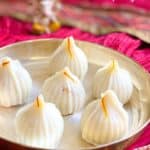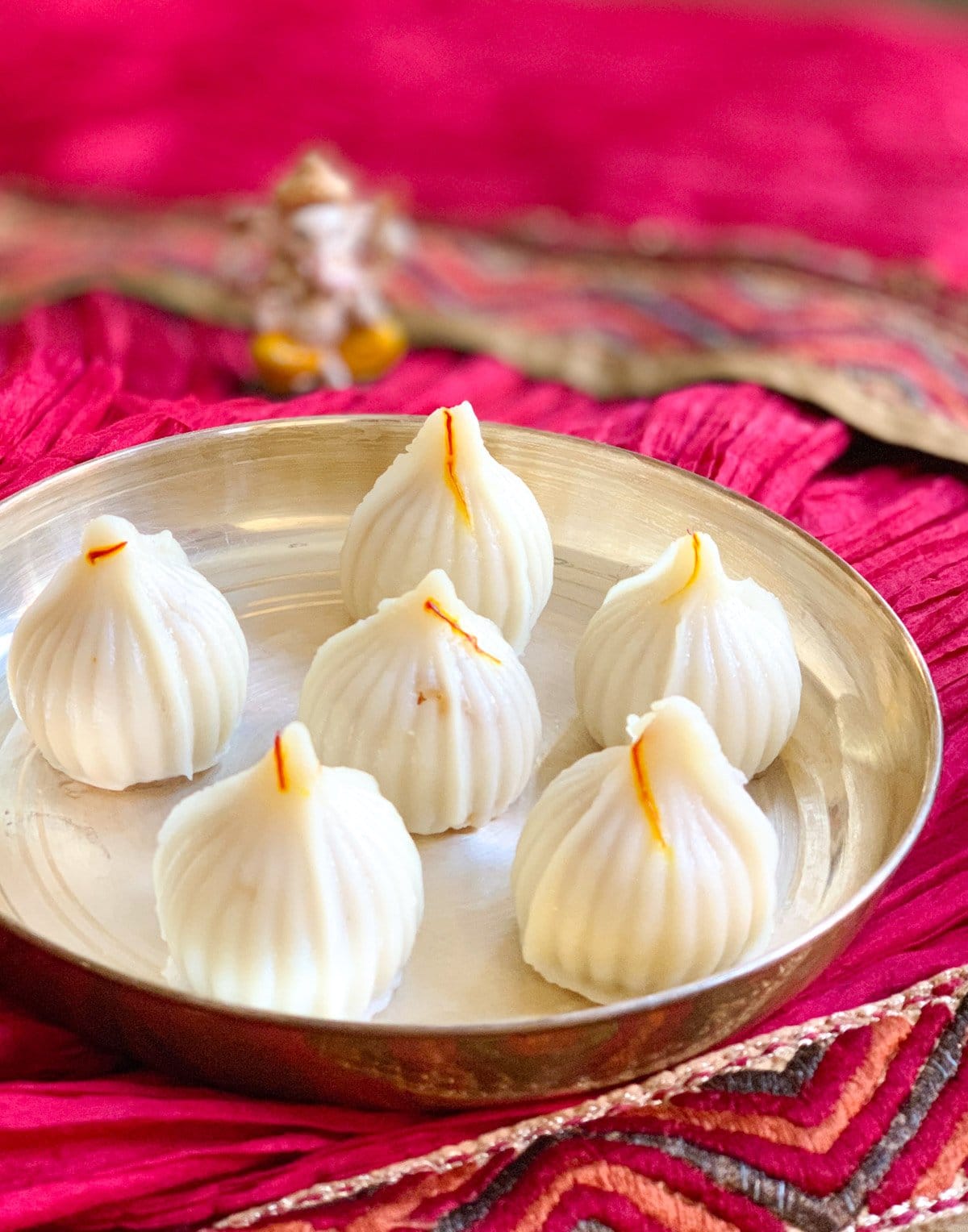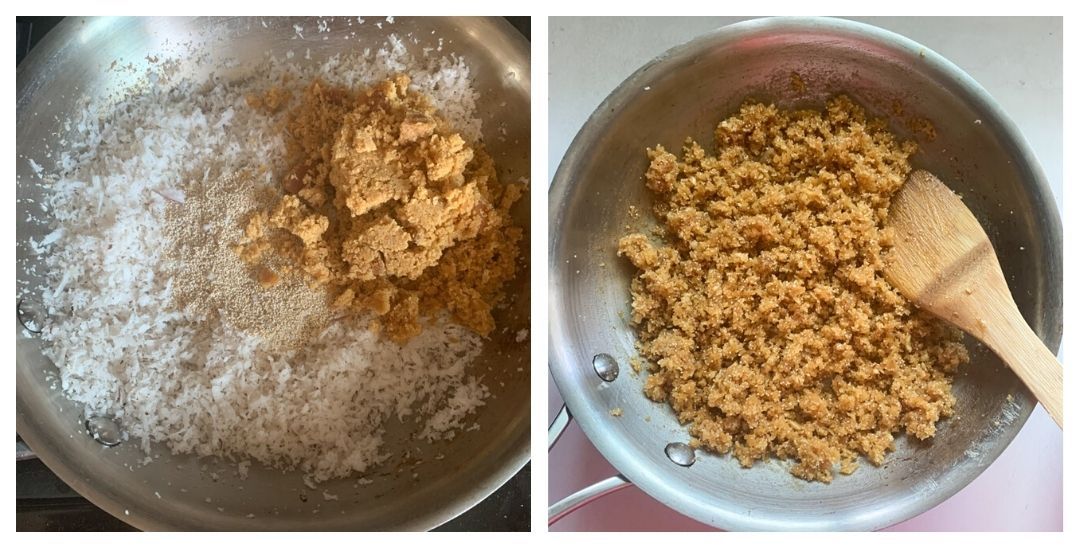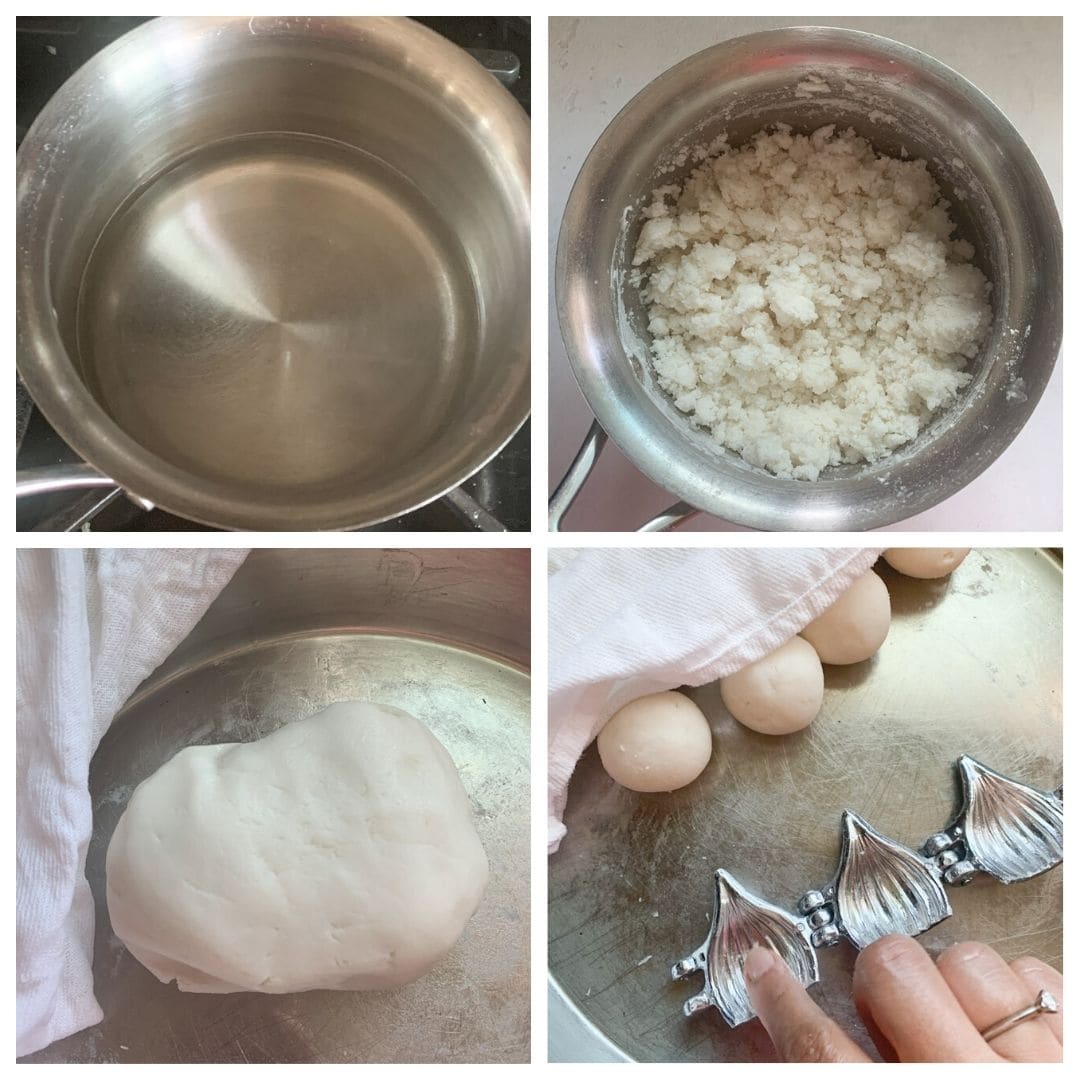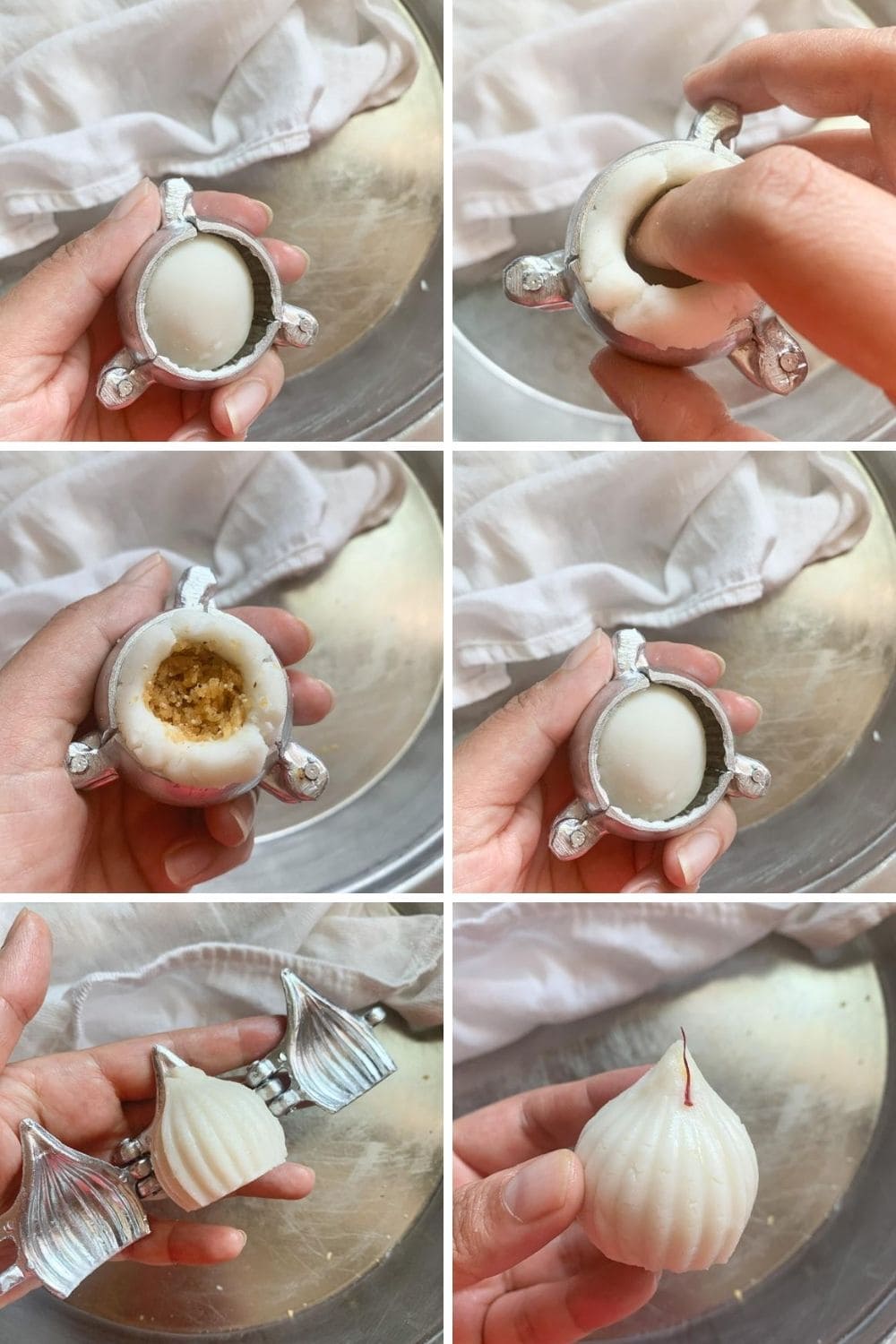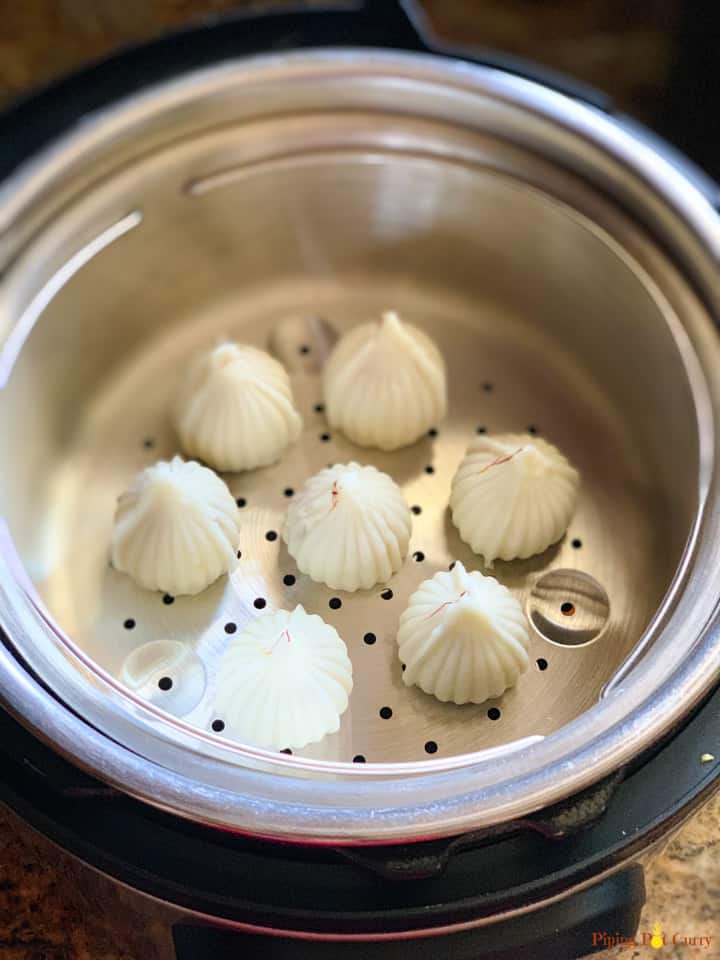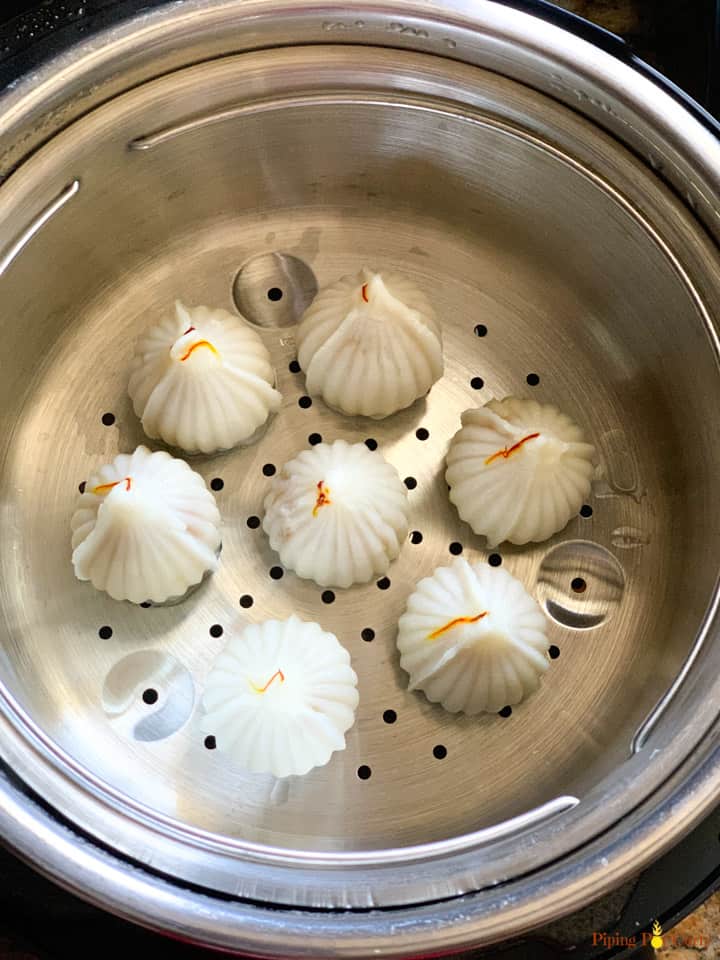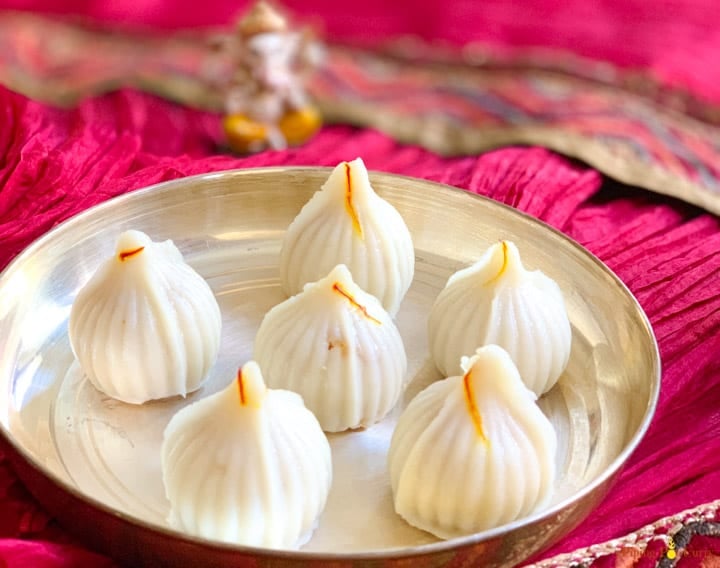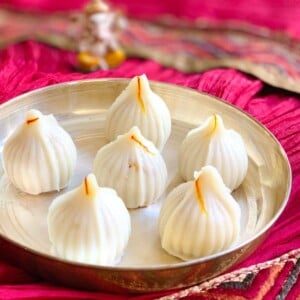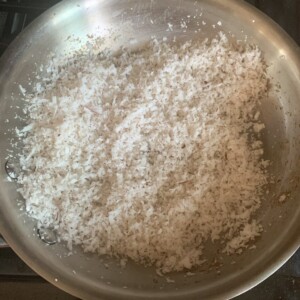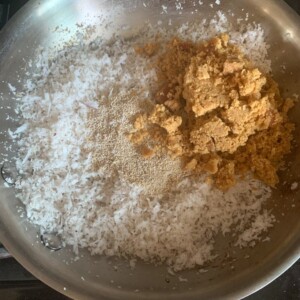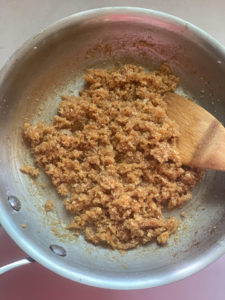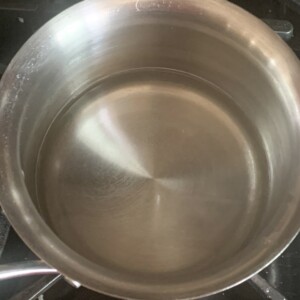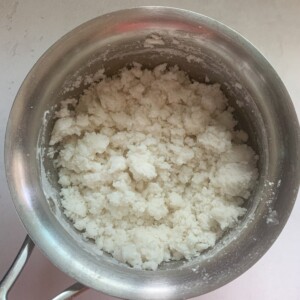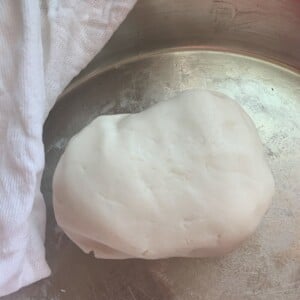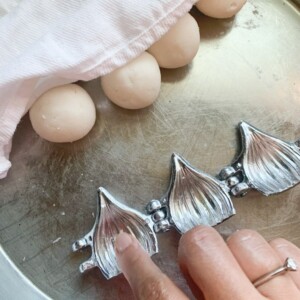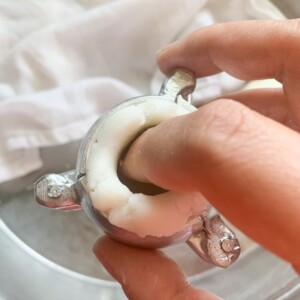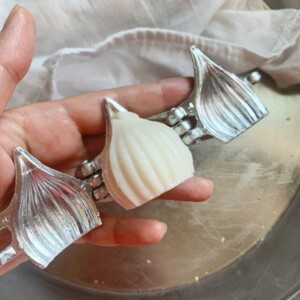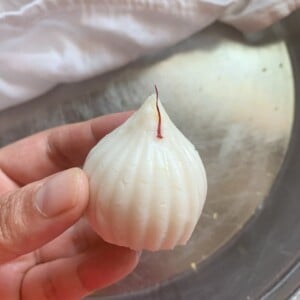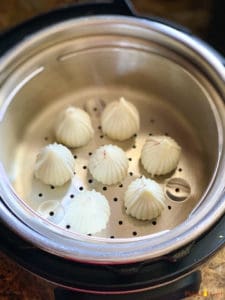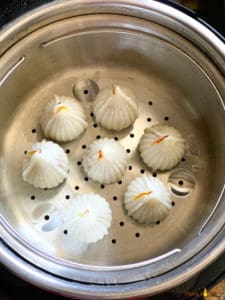I am not a Maharashtrian; however, I grew up in Mumbai, where Ganesh Chaturthi is celebrated with much flair. We used to go to many of our friends’ houses who had Ganesh offerings in their houses and enjoyed eating all the sweets. Today, I am sharing my Maharashtrian friend Shweta Pimparkar’s authentic family recipe and tips to make Modak. I was quite afraid to try making Ukadiche Modak as I had heard it is hard to shape them, and they can break when steaming. However, once I spoke to her, she assured me that with her recipe and her mom’s expert tips, I would be able to make modak. So here you have the best Ganesh Chaturthi recipe with expert tips to try your hand at making modak at home!
Watch How to Make Ukadiche Modak
What is Modak?
Modak is a sweet made during the festival of Ganesh Chaturthi as an offering to Lord Ganesha. There are two types of modak – steamed (ukadiche modak) and fried (talniche modak). You can also make sweet modak with dry fruits or mawa.
What is Ukadiche Modak?
Ukadiche means steamed in Marathi. Ukadiche Modak is a Maharashtrian sweet recipe for steamed modak. It has a sweet stuffing of coconut and jaggery stuffed in a layer of steamed rice flour. The outer layer is made from rice flour dough. Ukadiche Modak is made on the first day of Ganesh Chaturthi as an offering or prasad. People also make it on Sankasti Chaturthi and Angarika Chaturthi.
How to make Ukadiche Modak?
The three main ingredients of Ukadiche Modak are – rice flour, coconut, and jaggery.
Prepare the filling:
Heat a heavy bottom pan on medium flame. Add 1 teaspoon ghee and grated coconut and roast it for 2-3 minutes. Add jaggery, cardamom, and roasted poppy seeds. Cook until they blend together and ooze out a little liquid, about 2-3 minutes. Do not overcook. You just want the jaggery to mix well with the coconut and not have any lumps. Take the pan off the flame and let it cool. It is important that the mixture completely cools. You can also add finely chopped cashews, almonds, and raisins added to it. You can also add ⅛ teaspoon nutmeg to this mixture if you like, along with the cardamom.
Prepare the covering:
In a pot, bring 1 cup of water to a rolling boil. Add 1 tsp ghee and salt (optional). Turn the flame to low. Add the rice flour and mix it well with a spoon. This will make a lumpy mixture. Turn off the flame. Cover the pot and leave it for 3-5 minutes. Note: The rice flour used here must be very fine. Some Indian grocery stores might carry Modak flour. Otherwise, you can buy the normal rice flour at the store and run it through a fine sieve. Remove this to a large bowl and let it cool a bit. You want this mixture to remain warm while making dough from it. While the mixture is still warm, apply some ghee and warm water to your hands and knead it until it is soft, about 5-7 minutes. The dough should not look patchy or crumble. You will need to add 2-3 tablespoons of warm water to get the perfect smooth dough. Optionally, you can add a couple of teaspoons of warm milk while kneading the dough, which will make it extra soft. Wrap the dough with a damp cloth. It is important to keep the dough damp and soft. Now make 12-14 lemon-sized balls. Note: The size of the balls will also depend on the size of the modak mold you have. Also, keep the balls covered with a damp cloth.
Assembling Modak:
Modak can be shaped in two ways – using hands or using a mold. Using a mold is great for beginners, and you get very good results with a modak that does not break when steamed. Pleating and shaping modak by hand takes a lot of practice to get right. I am a beginner myself at making modak and hence used a mold, and I could get perfect results in my first try with my friend’s recipe and tips (all here in this post).
How to make modak using a mold
Apply some ghee or oil to the base of a steamer basket. Open the mold and apply ghee with your fingers to the inside of the mold. Close the mold, and place one lemon-sized dough ball inside the mold. Now, with your finger, start spreading the dough to the sides of the mold so it gets the shape. Allow some dough to come out of the mold, which will be used to seal after adding the stuffing. Scoop in a spoonful of the filling and gently seal the bottom with the dough that came out of the mold. Open the mold and remove the modak gently. Place it in a steamer basket. Make remaining modak’s in the same way. Between making modak’s, apply ghee again to the mold. Optionally, place a strand of saffron on top of each modak and press it into the rice flour covering. Depending on the size of your steamer basket, you might want to steam modak in multiple batches. You want to make sure the modak are not placed too close to each other.
How to make modak without mold (using hands)
Using your hand, flatten the lemon-sized dough ball by applying pressure at the center but keeping one finger at the edges to seal any broken sides. Keep applying warm water to your fingers as needed to seal the edges. Scoop in the mixture and slowly, with the base of your hands, wrap it up. Using a toothpick, make an impression all around the modak for an easy pattern. Another way is to make petals on the sides of the flattened dough after adding the filling. Then, wrapping it with the base of your hands.
Steaming Modak
Steaming Modak in the stovetop steamer
In a pot where the steamer basket fits, bring water to a rolling boil. Set the boiling water on medium heat. Place the steamer basket and steam the modak covered for 8-10 minutes. You should see a shine appear on the modak. Take the steamer basket out and let it cool for about 5 minutes. This will help make sure the base does not break when you pick up the modak.
Steaming Modak in the Instant Pot / Pressure Cooker
Add 1 cup of water to the Instant Pot insert and place the trivet. Let the water boil in saute mode while you are preparing the modak. Place the steamer basket with modak on the trivet. Close the lid with the valve in the venting position. Set on steam mode and steam for 10 minutes. You will need an external timer to keep the time. After 10 minutes, remove the lid after the pin has dropped. Carefully remove the steamer basket and let the modak cool for about 5 minutes. This will help make sure the base does not break when you pick up the modak. Ukadiche Modak is ready to be enjoyed!
Tips for making the best Ukadiche Modak
Frozen coconut: If fresh coconut is not available, you can use frozen coconut. I used frozen, and the mixture looks like it has long strands of coconut, but it works well. The ideal is fresh coconut; however, this works if fresh is not available. Preparing the day before: This stuffing can be made a couple of days in advance and refrigerated until ready to be used. Rice flour: It is important the flour is very fine. You can buy Modak rice flour or stone ground rice flour. Another option is to sieve store-bought rice flour through a fine sieve before using. Making dough: Make sure to knead the dough very well until it is very smooth. Also, knead when the dough is warm. Do not wait for it to turn cold. Also, the skin of the modak should be as thin as possible. So make sure that it’s even and thin.
Common Questions
Involve your family in making modak and celebrate the festival of Ganesh Chaturthi. Enjoy eating them after worshipping Lord Ganesha. Serve this modak with Batata bhaji, Poori, and Shrikhand. If you like this Indian sweet, you will enjoy Coconut Ladoo, Rava Ladoo, and Chocolate Ladoo as well.
